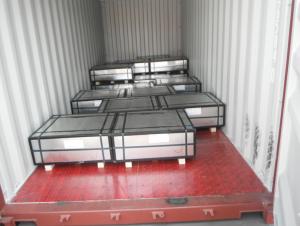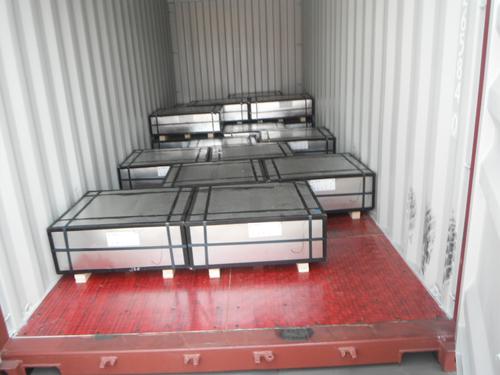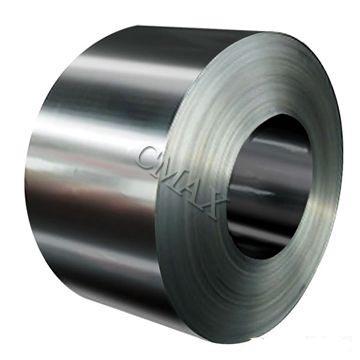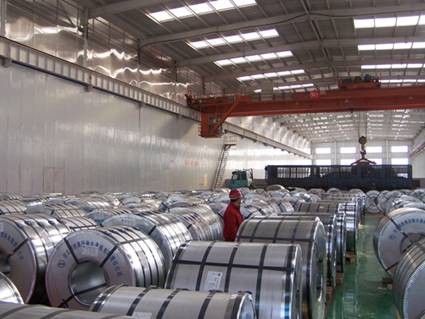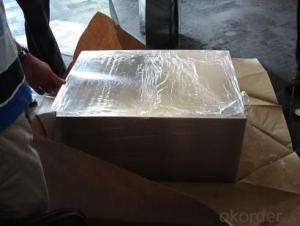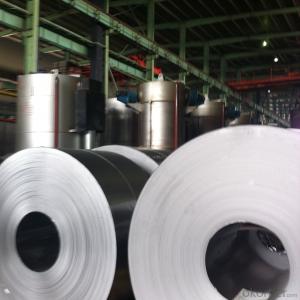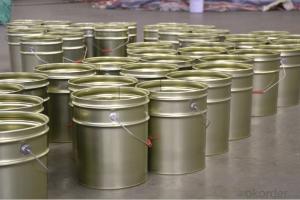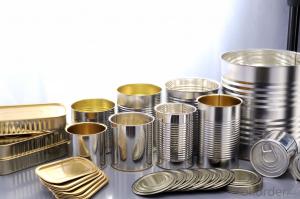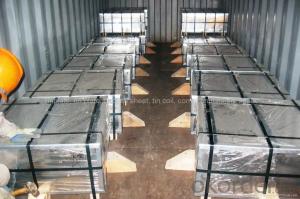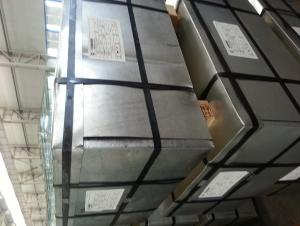Tinplate Coil, SPCC Material, Stone Finish, JIS G 3303 For Paint Cans
- Loading Port:
- Tianjin
- Payment Terms:
- TT OR LC
- Min Order Qty:
- 25 m.t.
- Supply Capability:
- 10000 m.t./month
OKorder Service Pledge
OKorder Financial Service
You Might Also Like
1.Brief Introduction
Tinplate is widely used for making all types of containers, containing industrial usage such as paint can, oil can, aerosol cans etc., and food cans like milk powder cans, tomato paste can, dry food cans etc.
2. Quality
As a state owned company and a large tinplate supplier in China, our tinplate quality ranks 1st level in China, similar to Bao Steel, Posco etc.
3. Specification
standard: GB/T2520, JIS G3303, DIN EN10202
Material: MR /SPCC
Thickness available: 0.16-0.50MM
Width available: 600~1050MM
Temper grade: T1 – DR8
Tin coating: ordinary 2.8g/2.8g, 5.6g/5.6g and others
Package: sea worthy export package.
Applications: Tin can for chemicals & paint cans, industrial cans, food cans
4. Our production steps
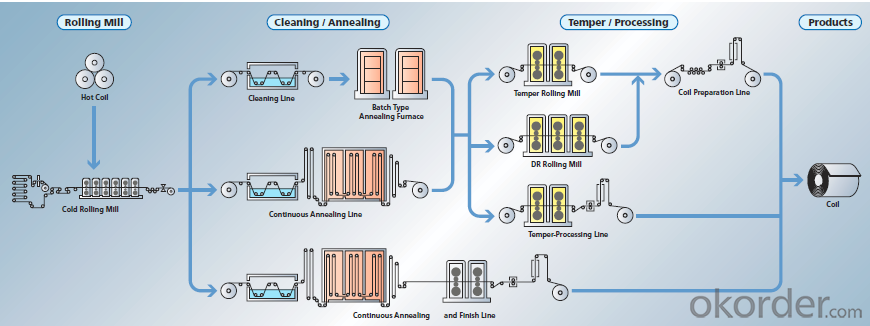
5. Usage Scope

6. Our euxport market
our tinplate has been popularly exported to more than 30 countries, including Asia, Europe countries, Gulf area, Sounth America, Northe & South Afric etc.
7. FAQ
a. what's the annual output?
about 500,000 tons per year.
b. where's the raw matrial from?
our hot rolled coil is purchased from Capital Steel and other state owned mill, with quite good quality.
c. how long is the delivery time?
normally for SPCC about 45~55 days, while 65~75 days for MR material
d. how to control the quality during production process?
inside our workshop, we have MES syestem. It realizes the optimization of the production procedure in the workshop. It could record each step of the whole production procedures, and if some problem appears, factory could easily found and take action, it’s quite helpful to monitor and control the quality.
- Q: How is tinplate affected by different types of cosmetics?
- Tinplate can be affected by different types of cosmetics due to their chemical composition. Certain cosmetics, such as those containing acidic or alkaline ingredients, can cause corrosion or discoloration on the tinplate surface. Additionally, prolonged exposure to certain cosmetics, especially those containing solvents or oils, can lead to the degradation of the protective coating on the tinplate, making it more susceptible to rusting. Therefore, it is important to choose cosmetics that are compatible with tinplate packaging to ensure its longevity and integrity.
- Q: How does tinplate withstand corrosion?
- Tinplate withstands corrosion due to the thin layer of tin that is electroplated onto the surface of the steel. Tin is highly resistant to corrosion, providing a protective barrier that prevents the steel underneath from being exposed to moisture and oxygen, which are the main causes of corrosion.
- Q: What are the environmental benefits of using tinplate?
- The environmental benefits of using tinplate include its high recyclability rate, reducing waste and the need for new raw materials. Tinplate also provides an effective barrier against oxygen and moisture, helping to extend the shelf life of products and reduce food waste. Additionally, tinplate is lightweight, making it more energy efficient to transport and reducing carbon emissions.
- Q: How does tinplate affect the shelf life of products?
- Tinplate can significantly extend the shelf life of products due to its properties such as resistance to corrosion, airtightness, and light-blocking abilities. It forms a protective barrier that prevents contact with oxygen, moisture, and other external factors that can cause spoilage or degradation. This helps maintain the quality and freshness of the products, ultimately increasing their shelf life.
- Q: How to quickly distinguish tinplate and ordinary substrate iron?
- Tinplate is the substrate, iron tin plating, tin bright, the substrate is dark, the substrate for a few days rust, and the two put together, the difference is great.
- Q: What are the main manufacturers of tinplate?
- Some of the main manufacturers of tinplate include ArcelorMittal, Tata Steel, ThyssenKrupp, Nippon Steel Corporation, and JFE Steel Corporation.
- Q: How does tinplate contribute to the overall convenience of packaging?
- Tinplate contributes to the overall convenience of packaging by providing a durable, lightweight, and versatile material that is easy to handle and transport. It offers excellent resistance to corrosion and can be easily formed into various shapes and sizes, allowing for efficient packaging solutions. Tinplate is also able to preserve the quality and freshness of the packaged goods for an extended period, making it ideal for food and beverage packaging. Additionally, its smooth surface allows for attractive printing and labeling options, enhancing the overall aesthetics and appeal of the packaged products.
- Q: Can tinplate be used for packaging pharmaceutical products?
- Yes, tinplate can be used for packaging pharmaceutical products. Tinplate is a type of steel coated with a thin layer of tin, which provides excellent corrosion resistance and protection. It is commonly used in the packaging industry due to its durability, strength, and ability to maintain product integrity. Tinplate containers can effectively safeguard pharmaceutical products from external factors such as moisture, light, and oxygen, ensuring their quality and shelf life.
- Q: How to quickly open the bottle?
- Put the tins of canned fruits soaked in hot water for 3-5 minutes, so that the tank gas temperature rises, the pressure is increased, which is the principle of expansion and contraction. Turn the canned fruit bottle upside down for a while. When the liquid in it breaks down the vacuum inside and outside, tap it in the bottom with your palm and pull it gently. It's easy to pull apart.
- Q: How is tinplate coated for construction materials?
- Tinplate is coated for construction materials through a process called electrolytic tin-plating. In this process, a thin layer of tin is applied to the surface of steel or iron sheets by immersing them in an electrolyte bath and passing an electric current through it. This creates a chemical reaction that deposits the tin onto the material, providing it with a protective coating against corrosion and improving its durability for construction purposes.
Send your message to us
Tinplate Coil, SPCC Material, Stone Finish, JIS G 3303 For Paint Cans
- Loading Port:
- Tianjin
- Payment Terms:
- TT OR LC
- Min Order Qty:
- 25 m.t.
- Supply Capability:
- 10000 m.t./month
OKorder Service Pledge
OKorder Financial Service
Similar products
Hot products
Hot Searches
Related keywords
